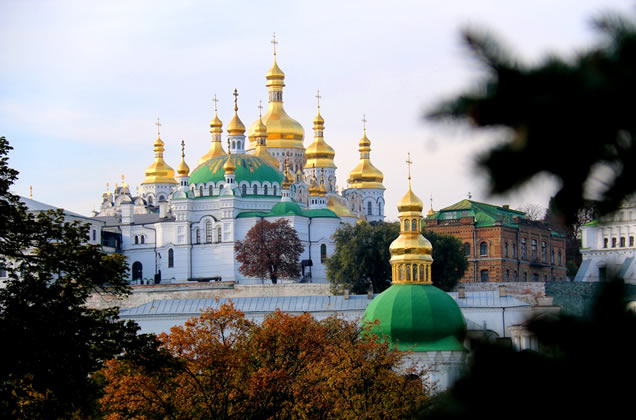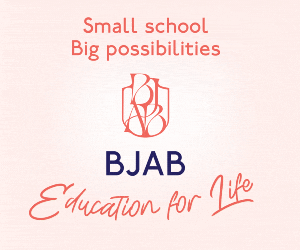Lesley Williamson discovers golden domes, shimmering spires and bohemian spirits of freedom.
The capital of Ukraine is a surprising destination to be explored in autumn, when the season transforms autumn leaves into striking hues of golden yellow, red and amber. The city centre that staged Ukraine’s revolutionary demonstrations and protests has awoken to a beautiful and serene existence. After the political turmoil that shook the country in 2014 and affected its entire tourism industry, a visit to its glowing capital is a powerful and overwhelming insight into the wind of change blowing over Ukraine.
When you think of a city break away, Kiev doesn’t instantly spring to mind. However, back in 2012, tourists and investors were flocking to the city and Ukraine stood proudly as the 8th most popular tourism destination in Europe, welcoming 23 million visitors that year. No wonder really. The ‘Mother of all Slavic nations’ is steeped in history and rich in culture and culinary delights.
Meet the locals
‘Babushkas’ are the stronghold of the nation, and the best place to interact with them is local markets. The influence of the former ‘friendship of nations’ is particularly obvious in lined-up street food stands held by these hard-working ladies wearing colourful headscarves. Their resilience, endurance and wise outlook on life is an immense source of inspiration, offering a local experience that plunges us into an entirely different world.
Former centre for craftsmen and merchants, Podilskiy, one of the oldest parts of Kiev, is an ideal starting point. Home to the imposing soviet-era structure Zhytniy market, it is a feast for all senses, teeming with jostling babushkas displaying home-grown vegetables and all sorts of pickled, potted or dried berries and nuts. For a country that has been no stranger to famines, it produces in its rich and dark soil some of the most flavourful fruit and vegetables.
At the entrance of the covered market, we meet Natasha, our local guide and University Professor of Tourism dedicated to sharing her passion for her city’s history. Although the first impression of austerity on the faces of passersby and the absence of spontaneous smiles is undeniably noticeable, Ukrainian hospitality is sincere and generous. Natasha is a perfect example of emotionality, a carefree and humorous attitude typical of urban Ukrainians.
With a strong desire to highlight the monumental political changes that rocked her country after the 2014 uprising, Natasha begins her tour in front of St. Michael’s Golden-domed Monastery. A showcase of the new military equipment handled by young soldiers on the esplanade is a clear hint of cautious optimism hanging in the air of a country embroiled in a military conflict. Like a whole generation of Ukrainians, Natasha is not bogged down with political correctness, and her inability to take things lightly is reflected in the way she emotionally recalls the sacrifices of protesters killed by the crushing force of riot police. Hundreds of young men’s portraits, honoured with flowers and candles in a public tribute to the nation’s heroes, stand as poignant evidence that a newly independent country is emerging from its Russian legacy, timidly establishing its own unique identity.
We enter the spectacular dazzling blue monastery, built in 1713 by architect Rastrelli, with its soaring domes, mosaics and bright paintings, a fine approach to the smells, sounds and ancient traditions of the Orthodox Church.
We head across the boulevard to Kiev’s oldest standing church, Saint Sophia’s Cathedral, a true masterpiece of art and architecture built in Byzantine style and transformed in the baroque period. Built in 1037 by Prince Yaroslav the Wise and modelled on Hagia Sophia in Istanbul, this majestic 13-cupola sanctuary opens up a magnificent world of buildings, a museum and treasures of rich mosaics and frescoes, almost intact a millennium later.
Religious devotion is striking throughout the city’s churches, and the UNESCO World Heritage caves monastery is its spiritual heart. Even though we try to escape from the usual things to do on this trip, the must-see Kiev-Pechersk Caves Monastery, perched on the pictorial hills of Dnipro River turns out to be a spiritual, yet spooky experience. Not recommended for the tall or claustrophobic, we descend with candle light through a network of ancient underground tunnels and chambers connecting coffins of mummified monks’ relics, revealing glimpses of blackened hands and fingers. Headscarves and long skirts for women are compulsory for worshipers and visitors alike.
The views over the city’s startling scarlet, purple, gold and orange shades, blazing across Kiev’s three hills and sweeping into the valley are breathtaking. Rising from these leafy hills are two memorial centerpieces: a gigantic Brezhnev-era Motherland statue bearing sword and shield, casting her all-encompassing eye over Kiev and the ‘Friendship of Nations Monument’, a concrete rainbow arch over the Dnipro river.
A way of life
To savuor cornerstones of Ukrainian cuisine, we sample a hearty borsch, a slow cooked beetroot soup with dill, potatoes and cabbage served with sour cream and soft, garlicky buns. The scrumptious chicken Kiev is a staple of Soviet catering, although its exact origins seem to have been lost somewhere behind the Iron Curtain.
To build up appetite and clear the palate, Ukrainian customs involve ritual shots of pure vodka throughout the meal. An engaging social tradition that loosens up conversations around emerging patriotism and hopes for closer ties to Europe among Ukrainians, struggling to come to grips with years of stagnation, corruption and domination. Fear of the authorities has given way to a sense of freedom and willingness to speak up against them. Public disillusion with the system’s inability to implement real anti-corruption laws and employment seems to be the driving force behind the people, prone to individual initiative and a newly-found craving for personal achievement.
Today in Kiev, the air may still be warm with summer’s breath but the winds of change signal that a new season is arriving. Just like autumn is the quintessential period to illustrate features of transitions, to some extent, tourism and the international community’s recognition of this fascinating travel destination illustrate the support we can give to societies aspiring to prosperity and peace.
Getting there: Ukraine International www.flyuia.com.
Tours of Ukraine : Leading tour operator for transportation, hotel bookings and excellent tours with qualified multilingual guides www.arktur.ua.
To stay: Bontiak Hotel bontiak.com is conveniently located close to St Sophia and good value for money.
To eat: Ukrainian specialties and authentic atmosphere: www.pervak.kiev.ua ; Live music and the best steaks in town tarantino.kiev.ua.







